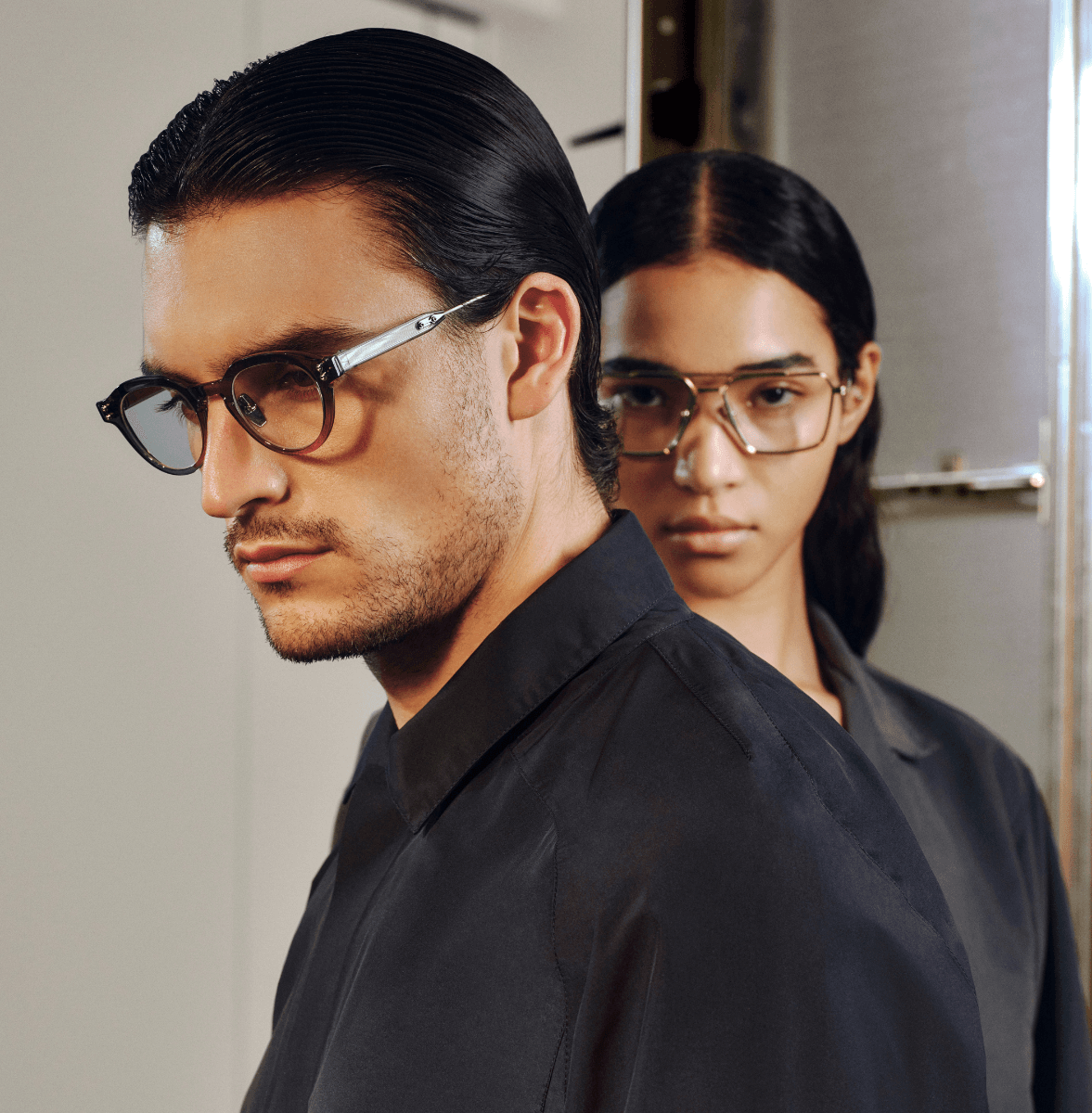Choosing the perfect eyeglass frame for you is a function not only of personal taste and fashion sense, but there is also a technical side to it. A frame should not only be appealing to the wearer esthetically, but should fit the face properly and suit your prescription in order to maximize comfort. Here are some of the variables to consider in your frame choice.


FRAME SHAPE
What looks fabulous on one person can look terrible on another. That is due in part on the size of your face and in part on the shape of your face. Your face shape does play a significant role in whether a frame will suit you. Generally speaking a square frame will suit a round face and a round frame works well with a square face. Many different eyeglass shapes will suit oval faces, including round, square, cat-eye or octagonal. Another face shape less common is the heart shape where the face has a wide top third and narrow bottom third. The ideal frame for this face shape would be a frame that is wider on the bottom.
FRAME SIZE
More important than the lens size is the overall frame width and how it works with the width of your face. Not all 52 eye size frames will fit the same. Rather pay attention to where the end piece of the frame is in relation to your face. The end piece should match with the widest part of your face, which is generally at your temples (near the top part of your ears).
EYE POSITION
Ideally your eyes should be centered in the lens, preferably placed within 5 mm inside of the lens center on the horizontal, and vertically below the top 25% of the lens, but at or just above the frame optical center.
NASAL FIT
The nasal fit, or bridge size is crucial in the comfort of the frame as it rests on your face. The frame should rest comfortably on the sides of your nose, whether they consist of acetate pads that are incorporated into the frame, or nose pads attached by metal arms. The acetate frame bridge size should not rest solely on the top of your nose but gently hug your nose along the sides. In addition, the frame should never rest on your cheeks, nor should it sit so close to your face that your lashes touch the lens. With a frame that has metal pad arms and separate nose pads, the nose pads can be adjusted to fit the frame into a better position. An acetate frame bridge cannot be adjusted, however there is a repair lab that can imbed either the pad arm nose pads, or build up acetate on the bridge to allow the positioning of the frame to sit more ideally. This customization could widen your frame choice possibilities.
PRESCRIPTION SUITABILITY
Two factors are involved with prescription suitability, one being your RX power, and the other your type of RX. People with lower power RX’s and single vision wearers would have little restrictions in terms of frame suitability in relation to their RX. For higher power RX’s, it is important not to go too large in the frame as the larger the frame, the thicker the lens will be and the heavier it will weigh. A well centered lens will also help to minimize lens thickness and weight. For progressive lenses and bifocal lens wearers it is ideal that your eyes are centered properly, and keep in mind that the deeper the frame (to a certain point), the more room there will be for the intermediate and reading portions of the lens.
Read also


